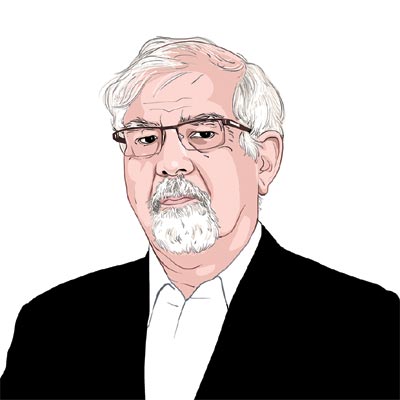Opinion The importance of pleasing Sonia Gandhi
Chidambaram raises the old cry to tax the rich,though we have no current data on tax distribution
In what has to be one of the most outrageously gratuitous statements from a cabinet minister in recent memory and there is plenty of competition former finance minister P. Chidambaram boldly declared that the time had come to raise income tax rates in India; time once more to sock it to the rich. That this was all very noble is indicated by his remark that it takes courage to take such a stand. And just in case anyone was fooled that this was his original idea,Chidambaram helpfully added that rich people in Europe were getting together to say: Please tax us more.
Is it just a coincidence that Chidambaram has alluded to this old leftist idea at precisely the time when he is under severe criticism from within his own party for his role in the 2G scam? Pleasing the madam chairman of the party,Sonia Gandhi,is the first refuge of both those in power but suspected of being booted out,and those outside,wishing ever so plaintively to get in. It is no secret that the chairmans views on economics are similar to,if not in excess of,Indira Gandhis ultra-leftist policies of the early 1970s. That was the time when she nationalised the banks and led the battle-cry for taxing the rich more and she did,by increasing the marginal tax rate to a world record of 97 per cent. She did not garner any additional tax revenue,but did succeed in making every citizen an evader of taxes,every citizen a black money generator,and introduced big-time corruption in tax administration.
But let us examine the logic and facts behind Chidambarams bold proposal. He wants more inclusive growth yawn,who doesnt? Just to make sure Sonia Gandhi remains within earshot,he even more boldly declared that poverty must decline faster than the 1 percentage per annum rate. Yawn again. But what do these platitudes have to do with raising the tax rates on the rich? Oh,the European rich are saying please tax us more (even the Italians?),so why cant the Indian rich say the same?
The minister has done his maths. We need to tax the rich more because direct income tax revenues have been buoyant. Over the last five years (2006-07 to budgeted 2011-12),income tax collections have doubled from about Rs 85,000 crore to Rs 172,000 crore. It would be nice if,with a magic dream wand,one could just add a few thousand crores more only to help the government spend more on the poor. Just the other day,Chidambaram was arguing about outlays and outcomes and how the need of the hour was to improve the efficacy of government spending much more than Rs 15 out of every Rs 100 must reach the poor,he had thundered. But then he was a popular and secure finance minister in 2006.
It would be useful for Chidambaram,and all of us,to know who is paying how much tax in order to find out why a soak-the-rich policy would be a good idea. Some time back,in 2002,Vijay Kelkars taskforce on direct tax rates concluded that there was a missing middle among Indian taxpayers. In other words,while both the rich and the poor had high rates of tax compliance,the middle section of tax payers had very low rates. In other words,the maximum increases in tax revenues were not to be obtained from higher tax rates but better methods of compliance. This is also the conclusion of the Economists cover story in the September 24 issue. This story,entitled Hunting the rich (and one possible source for Chidambarams newfound angst),concluded: If the budget is a governments primary concern,then the evidence is that reforms that close loopholes and broaden the tax base are a more efficient way to bring in more money than higher taxes for the rich.
The missing middle results were for a decade ago and are quite possibly outdated. It is quite possible that there is no longer a missing middle,that indeed the tax rate can be raised with populist zeal and more revenue gained for UPAs inclusive growth. In Chidambarams own words,We must raise the tax revenue to defend (the expected aggregate decline of resources). Sonias populism must continue. And money for this should come from higher tax rates on the rich and not the efficiency of government expenditures?
So what does the tax return data say about compliance in 2010? It doesnt,it cannot,these data are no longer available. The last time the CAG published (spotty) data on tax returns was for the fiscal year 2006-07. In that year,there were 3.06 crore taxpayers and 6,00,000 individuals in the Chidambaram rich category (greater than Rs 10 lakh). Henceforth,all professors are rich by the gospel according to the UPA.
Since the report on 2006-07 tax collections,the CAG does not publish any distribution of tax data. Sources in the finance ministry assure me that even the policy makers do not have access to such data (RTI: please help). So let me see if you and I understand this correctly. When Chidambaram argues for higher tax rates,what is he indulging in politics,populism,or wild dreams? He doesnot know,and what is worse,neither does the government. Is this how policy on one of the most important economic issues is made in India without any data? Yes,because in India,no proof is required,for people who make policy and for those who want to make policy.
The writer is chairman of Oxus Investments,an emerging market advisory and fund management firm




